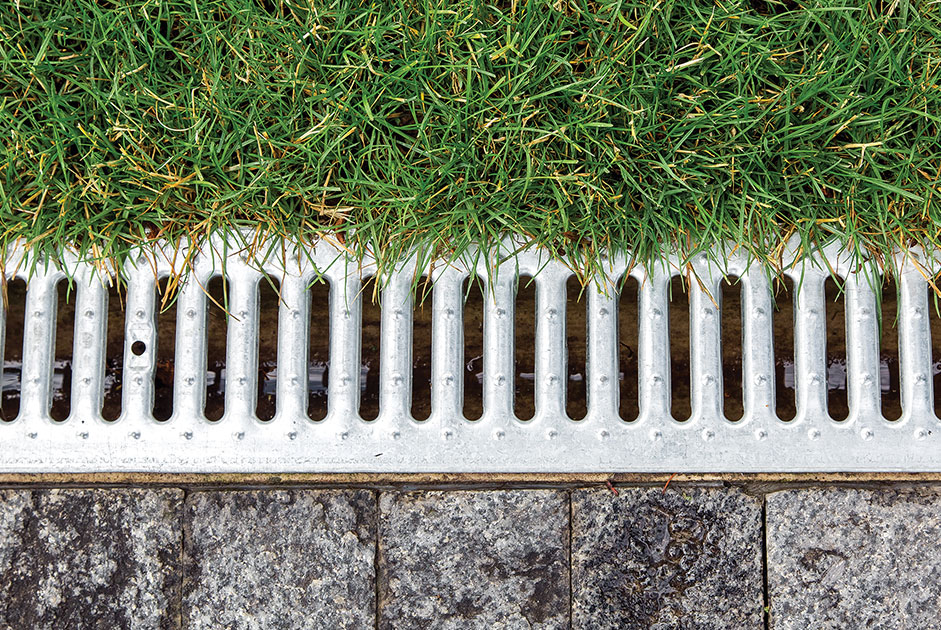BY LISA S.T. DOSS
Not everyone welcomes storm warnings with the same level of excitement! With each torrent of pounding rain creates new problems for homeowners. Pooling water arrives in small to semi-large depression areas in the yard or near the foundation. If you daydream about buying rolls of sod to remedy a new problem of algae or mud, first, you need to address an underlying issue – poor draining.
Understanding Poor Draining
In North Carolina, most yards comprise dense areas of clay and a percentage of loam, which combines soil, clay and sand. To better understand, try an experiment using a gallon-sized glass jar, if not larger, preferably with a wide-mouth opening. Dig a six-inch hole, fill the jar, compact it tightly and allow a few inches of available space from the lip. Pour water, set on “shower,” slowly. If water filters quickly, your soil is well-balanced and includes healthy amounts of organic material. Clay, on the other hand, is a fine-particle material, which expands as it absorbs water. Without organic matter to create spaces for draining, water collects at the surface. The density level influences the length of time the pool remains, which can span from hours to several days.
Step One, Draw a Map
Visual representations help pinpoint problem areas and the direction of flowing water. Start by sketching your property, including the house, patios or decking, driveway and other significant features. Does the soil slope from the house outward? Water should never pool near the foundation. Determine if the concrete walkway prevents water from entering the yard. Use lines to indicate high and low spots, and arrows to illustrate the direction of water flow. The goal is not to direct water towards your neighbor’s property, municipal storm sewer or street. Viable solutions are possible without involving your local government.
Addressing Slopes, Downspouts and Walkways
With an illustration in hand to help resolve problems, focus first on the areas closest to the foundation. Look carefully at the slope of the soil; it should be at a three to six-percent downward slope.
- Erosion, often, is a culprit leading to water damage or pooling areas near the home. French drains resolve the potential issue in new homes; however, rock draining fields coupled with pipes are effective methods. Alternative solutions require heavy plastic laid inches below the surface and extending three to four feet. Ground cover plants need little soil to grow and add a low-maintenance solution rather than grass.
- Are downspouts pointing into a flower bed or not long enough to forcefully push the flow away from the house? Too often, excess water collects in the mulch and seeps back to the foundation. Larger downspouts made from PVC pipe can lead away from the house and empty into a pit of stones underground.
- Large, mature shrubs may interfere with a clear view of the slope. Are the trunks mere feet away from the block or brick? In most cases, foliage that typically expands 15 feet requires a planting distance of eight feet. It’s wise to remove it. Concrete walkways may require an in-slab draining system with gravel-filled channels to change the course from pooling to flowing away.
Landscape Alternative to Grass
Depression areas can transition into beautiful eye-catching locations with a bit of effort, creativity and resourcefulness. Take the attributes you love, which may comprise a wow factor, such as a few large rocks or a creek bed of stones. Imagine surrounding the main attraction with water-tolerant, perennial plants such as Hostas, water hyssop, Iris, canna, elephant’s ear and a variety of ferns. What initially was a problem area could well-become your favorite place in the yard!





















